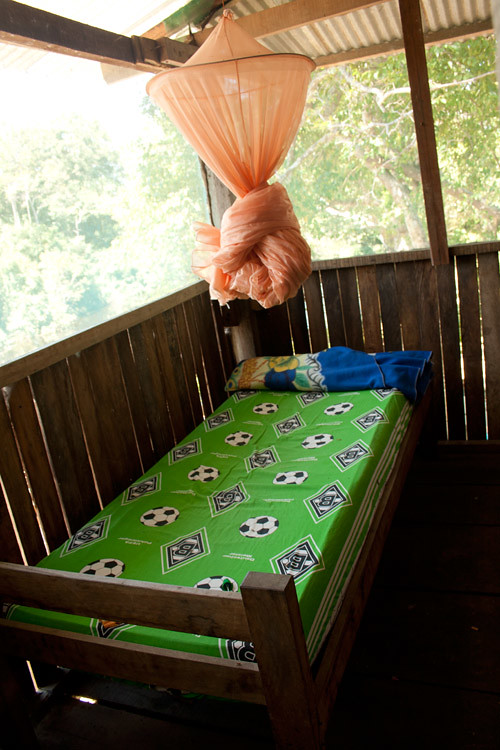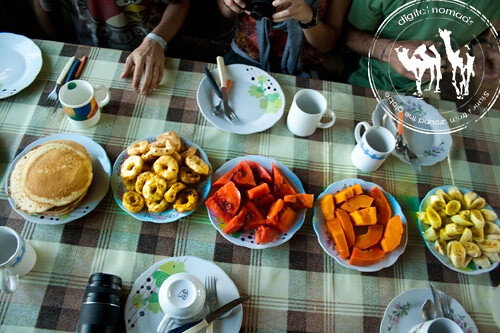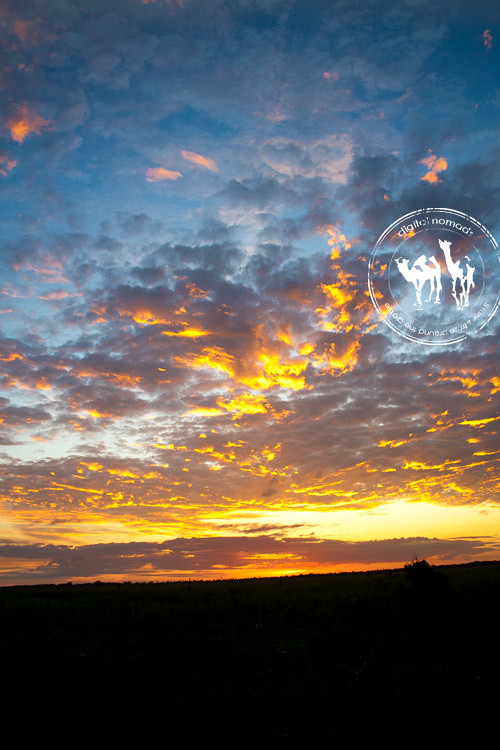Bolivian Pampas Travel Guide
Posted by Ariane on Jan 23, 2013 in Bolivia, Countries | 0 comments
If once in Rurrenabaque you choose to take a tour in the pampas, here is step-by-step of what you can expect to do and see.
* 1$=6.95 BoB “Bolivianos” (2012)
Although we’ve enjoyed all the places we’ve been in Bolivia very much, the last one was definitely our favorite. We stayed at Rurre (called “Zuzzay” by the locals) for three weeks. After leaving <a
href=”http://2digitalnomads.com/countries/wild-life-in-sajama/”>the cold mountains of Sajama, we stopped for two days in La Paz and took a flight to Rurre, hoping to heal our wounded lips!
How to choose a tour company?
As soon as we arrived in Rurre we booked a tour in the pampas, as our friends Bryn and David had to go back to La Paz a few days later.
We first checked several companies that offered tours in the jungle, and which were very expensive (up to $1000 for a few days). We then checked on tours for the pampas and found a deal at 500 BoB($72) /person for 3 days 2 nights excluding the entrance to the pampas (150 bob each). We went with FLECHA tour company. The guy made a presentation with photos on the computer, and although we didn’t check the other companies for the pampa tours, I think the various programs are pretty similar. There are basically four things to consider: transportation, accommodation, guide and food. It is very difficult to know exactly how things will be. Regardless of the company you choose, there is always a risk!
The Pampa Tour Step-by-Step
-
1st day
-
The car
We had to be at the company at 8.30am the next morning, and started our trip with four other people: three French guys and an American guy. In total there were eight of us (with us and our friends Bryn and David). We had a three-hour drive on a very bad road (it might have been the car, but we were still fresh, so it was ok) to the village of Santa Rosa, where we had our lunch. Here we started worrying about the quantities of food, as it was barely enough for eight. We started to look (in vain) for a grocery…
-
The boat
After lunch we took the car again for 15 min, paid for the entrance of the pampas (150 BoB each) and embarked on a small boat for a three-hour ride to the camp. During the boat ride we saw many animals we had never seen before! The boat was much more comfortable than the car, although it was not covered by a sunshade.
-
The camp
We arrived at the camp at around 5 pm. They showed us our rooms (we asked for a private one) and we had a snack (they served us popcorn and juice), which completed our poor lunch! Concerning the camp, you shouldn’t expect much comfort (although we didn’t check the other companies. Rooms are below basic, as are toilets and showers. After a short 15-min break (our guide Jacky was quite active!) we went back on the boat to a place where we could see the sunset and have an expensive drink. And while we were drinking and admiring the sunset, the mosquitos were also having a long drink of our tasty blood!!!
After the sunset and fight with the mosquitos, we went back to the camp for dinner.
-
The guide
We were lucky to have had what seems to be the best guide ever. Though Jacky didn’t speak English, he really made our trip a wonderful experience—stopping every time we saw animals so that we could take pictures (we’ve been told that some other guides don’t stop), explaining names and specificities of the animals and not giving up on any part of the program.
-
The food
All of our worries from the lunch experience vanished when we saw our dinner. We had very nice and tasty food (we even had some cake for dessert), and this went on for all the following meals. Breakfasts, lunches and dinners were all tasty, varied, complete and in sufficient quantity, and included a good quantity of vegetables, which is kind of a luxury in Bolivia.
After dinner we had to be ready to go and see the caimans at night. We came back at around ten and went to bed, as we would have to wake up at 5 am to see the sunrise the next morning.
-
2nd day
We set our alarm for 5 am, but I don’t know what happened…we awoke at 5.30 am to the sound of Jacky’s “VAMOS” call, so we were too late for the sunrise and they left without us, as the sun wouldn’t wait for us! But when they came back, Jacky told us that he would take us there the next day.
When they came back, we had our breakfast and went to look for anacondas. For that, they lent us wellies with lots of holes in them! We didn’t find any anacondas (I was happy about that, as I didn’t want the guide to take them or disturb them), and the other groups didn’t find anything either. I didn’t like that part of the program, as it was just walking under the sun bothering animals in their habitat.
After lunch we went and swam with the dolphins—much more fun than chasing the snakes! We came back for a snack and then went back on the boat to fish for piranha. We don’t like fishing either, so we just enjoyed the landscape and the many animals and birds of the pampas, and waited for the others to catch their dinner (which they finally did after we went to five different places where the food chain was as follows: the piranha don’t eat us (contrary to the legend), WE eat the piranha. BUT once again, the mosquitos ate us!
-
3rd day
We had to wake up and not be late this time, as Jacky did the sunrise activity especially for us. 5.30 am: “VAMOS”! Bassel was still wearing his lenses in the dark (in order to see the sunrise) and I was holding the lamp. “Yes vamos dos minutas…!” Thank God we did it, and at 5.45 we were yawning before the landscape, waiting for the sun to come up on the waking pampas. On the way back to the camp, Jacky showed us many birds we hadn’t seen before.
After breakfast we went swimming with the dolphins again, and there was an incident. One of the French guys got bitten on his toe by a dolphin—not because they are bad dolphins, but because they have teeth and they just want to play. So I’m sorry to say that the scene on the boat was very funny, as everyone in the water jumped back in the boat (because bitten means blood, and then piranhas and caiman and God knows what else!) without helping the poor guy. Jacky started the motor. The guy was ok, dolphins don’t have very long teeth anyway and we went back to the camp to treat and take photos of our “jaws pampas” survivor’s toe. After lunch we went back to Santa Rosa much more quickly than before (in an hour and a half) and went back with the same car to Rurre. That was the most difficult part, as we were tired and the ride seemed like it lasted the whole day! Upon our arrival at the company, they served us some cold Coca-Cola, which we appreciated very much.
What do you need to take?
- A mosquito repellent. We finished our small one in two days, so bring a lot!
- Long-sleeve T-shirts for the same reason white if possible, as we were told (and confirmed) that mosquitoes are attracted to the color black!
- Sunblock because the boat is not covered.
- A hat for the same reason (you sometimes spend the whole afternoon on the boat).
- Rain jacket, again because the boat is not covered. They have a tarpaulin that you have to hold, and if you seat at the front of the boat you will be the other passengers’ tarpaulin.
- A flashlight to see the caimans in the dark
- Some soap.
- Sleeping bags (they lent us a blanket, but we had to ask for it). It isn’t very cold, but at night a blanket is better.
- Swimming suit.
- Water for the first day. They will provide a bottle for each day after that.
- Your own plastic boots (or use the ones they will provide). In this case, bring socks.
And that’s all. Our tour in the pampa was unforgettable, and a definite must-do in Bolivia.






 Bassel & Ariane, a couple who quit their jobs to realize their dream "traveling around the world". This travel website is our way to share with you the amazing adventures we have had, with the goal of helping to make your own travels more enjoyable.
Bassel & Ariane, a couple who quit their jobs to realize their dream "traveling around the world". This travel website is our way to share with you the amazing adventures we have had, with the goal of helping to make your own travels more enjoyable.
0 Comments
Trackbacks/Pingbacks